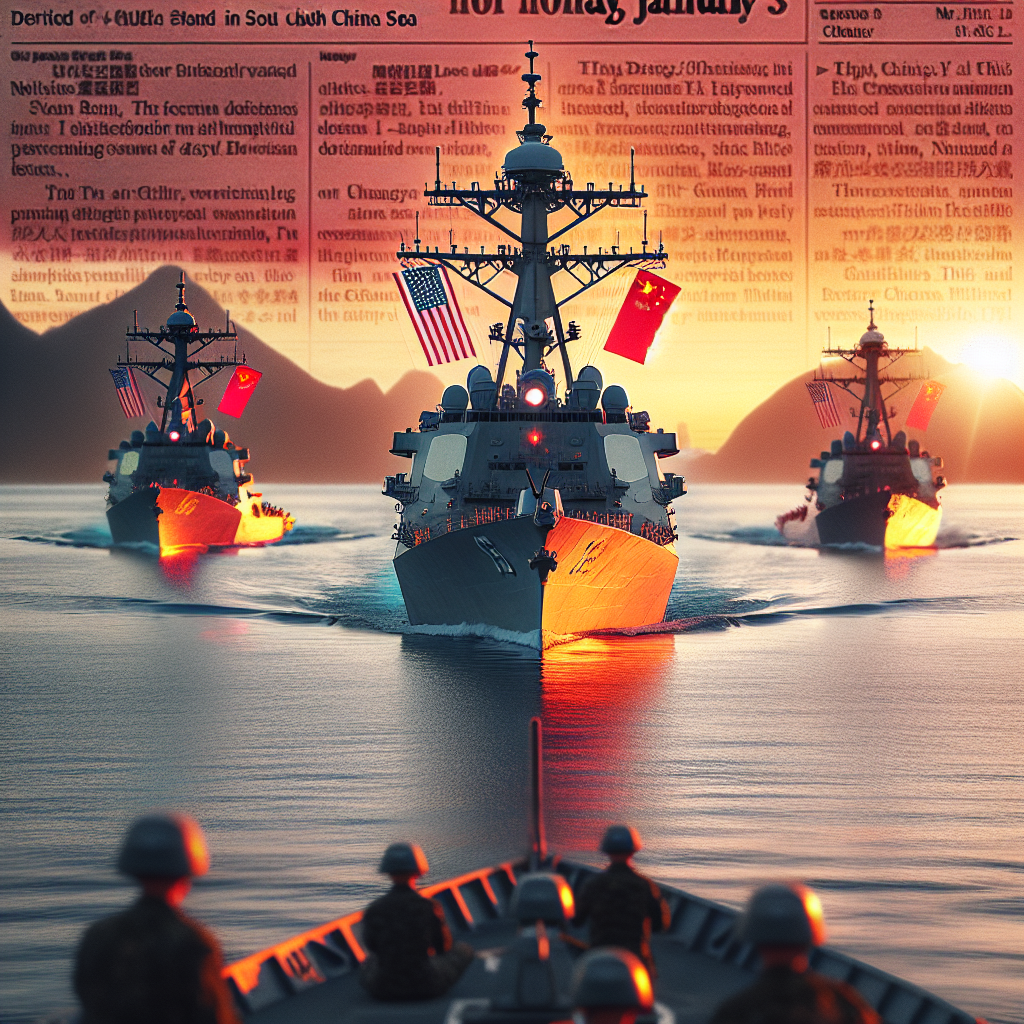The United States and Canadian navy destroyers rendezvoused near the Huangyan Island in the South China Sea last week, carrying out navigation tasks together in the South China Sea. The Chinese navy dispatched two warships to track them.
On Monday, January 13, Canadian TV network CTV reporter Adrian Ghobrial reported that the U.S. Navy destroyer USS Higgins and the Royal Canadian Navy destroyer HMCS Ottawa met near the Huangyan Island in the South China Sea last Thursday, January 9.
The two warships then sailed south towards the South China Sea. Soon, two Chinese navy ships – the “Changsha” destroyer and the “Yuncheng” warship – began tracking the Canadian and American warships.
Over the past decade, Beijing has conducted militarization construction on several islands in the region, including building airstrips, deploying cruise missiles, and radar systems.
In recent months, there have been multiple clashes involving Chinese and Philippine coast guard vessels in these waters.
The South China Sea holds significant strategic importance, with one-third of global shipping passing through. China claims almost the entire South China Sea, but a 2016 international tribunal ruled the claim invalid.
James Billings, the deputy commander of the USS Higgins, emphasized the importance of military cooperation between the U.S. and Canada. He described their cooperation goal as “plug and play,” a computer term illustrating convenient and easy-to-use collaboration without complex setup. This means the U.S. and Canada can seamlessly engage in joint operations when needed, without elaborate preparations.
“Working together and proving that interoperability is one step closer to being able to plug and play in conflict,” Billings told CTV.
HMCS Ottawa commander Adriano Lozer also expressed a similar sentiment. He said that this collaboration allows the two navies to “enhance our conflict response capabilities” and reach a higher level.
“We conduct anti-submarine warfare, surface warfare, and full spectrum communication in a completely interchangeable manner,” he explained.
HMCS Ottawa also carries the Royal Canadian Air Force’s CH-148 Cyclone helicopters, which conduct multiple flight missions daily as the ships traverse the Indian-Pacific Ocean.
Canadian Air Force pilots adhere to international regulations, maintaining a distance of at least 22 kilometers from Chinese naval bases. However, even so, Canadian aircraft face the danger of approaching Chinese fighter jets while on missions.
In October 2023, Canadian Air Warfare Systems Officer Lt. Theodore Yan was conducting a mission and was dangerously approached by a Chinese fighter jet. Subsequently, the Chinese fighter jet began firing illumination flares at the Canadian aircraft.
Canada has publicly criticized China for not complying with international airspace regulations in this regard. Prior to this, Western countries including the United States have also expressed similar concerns regarding China.

